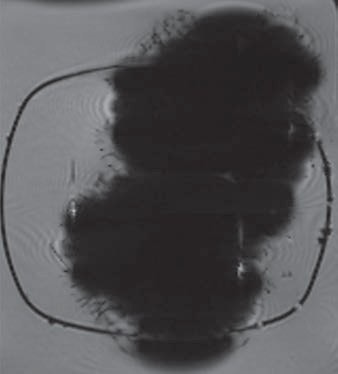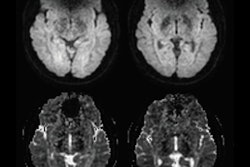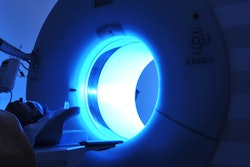
They may be small and insignificant, but false eyelashes with magnetic properties have drawn the attention of MRI researchers who are concerned about their potential effect on image quality and patient safety in a new study, published online July 24 in the American Journal of Roentgenology.
Researchers reported significant artifacts caused by the ferromagnetic eyelashes in phantom MR images and detachment of eyelashes from their placement inside the phantom due to the pull of the scanner's magnet. The results have prompted a recommendation that magnetic eyelashes be added to standard MRI safety checks prior to scanning, as well as a warning to imaging staff to refrain from wearing the accessories.
"The concept of unsafe MRI is a continually moving target. Devices that were never scanned with MRI, like pacemakers, are now routinely imaged," wrote co-authors Drs. Einat Slonimsky and Alexander Mamourian in the department of radiology at Penn State Health. "However, it is important for radiologists to be aware of new devices and attachments that do not appear on the standard questionnaires but still present the risk of adverse events, rather than simply wait for these events to accumulate before acting."
MRI personnel already are aware of the dangers of bringing metallic objects of any size into the scanner room. As magnetic eyelashes become an increasingly popular cosmetic accessory, more of these items will no doubt adorn patients scheduled for MRI scans in the future.
False eyelashes have long been a staple of the cosmetics industry, and their use has been growing in recent years. A new innovation in the segment is the use of tiny magnets that adhere to each other and attach the false eyelashes to the wearer's own upper lashes.
Naturally, the ferromagnetic composition of magnetic eyelashes would be attracted to the powerful pull of a 1.5-tesla or 3-tesla scanner magnet. So what are the potential adverse effects of the eyelashes on MR images and patient safety?
To help answer that query, Slonimsky and Mamourian purchased two sets of randomly selected magnetic eyelashes, attached them to single nylon strings, and placed them diagonally inside a phantom. The device was submerged into a container filled with distilled water and covered with a layer of plastic film to prevent the lashes from moving.
MRI scans then were performed on a 3-tesla scanner with a protocol that included six different imaging sequences. For comparison purposes, Slonimsky and Mamourian also conducted the same protocol on two cobalt alloy aneurysm clips and one titanium aneurysm clip.
"We did not attempt to scan a volunteer who was wearing these lashes because of the potential for injury resulting from heating, or trauma to the lashes or eyelids if the lashes should detach," they added.
In comparing the MR images, the artifact created from the magnetic eyelashes was much larger than the distortions created by three aneurysm clips. The artifact from the eyelashes measured 7 x 6 cm and was most severe on the susceptibility-weighted imaging sequence.
 Magnetic eyelashes caused an artifact that consumed much of this susceptibility-weighted MR image (above). By comparison, artifacts caused by three aneurysm clips (below) were similar but much smaller than the distortions from the magnetic lashes. Images courtesy of AJR.
Magnetic eyelashes caused an artifact that consumed much of this susceptibility-weighted MR image (above). By comparison, artifacts caused by three aneurysm clips (below) were similar but much smaller than the distortions from the magnetic lashes. Images courtesy of AJR.When the phantom was removed from the bore, the researchers saw that one set of eyelashes detached from its string, but it was restrained by the plastic covering and became attracted to the other set of eyelashes still attached to the phantom.
"We have shown that these magnetic eyelashes will significantly degrade clinical images but can also present a hazard to the patient," Slonimsky and Mamourian concluded. "On that basis, they should be added to the preimaging MRI questionnaire, and clerical staff who schedule MRI scans should advise against their use on the day of scanning. ... All staff, including physicians and technologists with access to the scanner room, should avoid their use as well."



.fFmgij6Hin.png?auto=compress%2Cformat&fit=crop&h=100&q=70&w=100)




.fFmgij6Hin.png?auto=compress%2Cformat&fit=crop&h=167&q=70&w=250)











